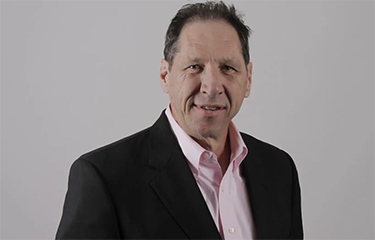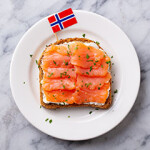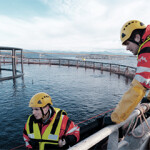Brian Perkins leading GAA's transition into GSA

On 20 April, 2021, the Global Aquaculture Alliance (GAA) announced it was transitioning into the Global Seafood Alliance (GSA).
A year into the change, the organization selected Brian Perkins – who has more than four decades of experience in the seafood industry – as its new CEO to lead the transition. Perkins replaced former CEO Wally Stevens on 1 January. Perkins served as the organization’s chief operating officer prior to his new role, and joined the organization after a six-year role at the Marine Stewardship Council.
“It’s an exciting time for the organization making the transition from an aquaculture-only to a total seafood assurance program and to be providing the assurances that we are,” Perkins said. “Wally Stevens saw the absence of the same level of assurance we provide in aquaculture in the wild-caught sector. So, there were many great environmental programs like [Marine Stewardship Council] or [Responsible Fisheries Management] that covered the under-the-water part, but there weren’t oceans programs in terms of the seafood processing plants and the vessels.”
Building off its previous success with its Best Aquaculture Practices (BAP program), GSA launched a new certification, Best Seafood Practices (BSP), in June 2021. BSP is focused on providing assurances to the market that wild- caught seafood has been harvested and processed in an ethical manner with respect to the safety and security of all employees across the supply chain. It currently has 29 vessels certified worldwide and a fleet of more than 250 vessels looking into getting certified.
The goal of BSP is to cover the “above-the-water” part of seafood supply chain assurances. It's an area that has received less focus than “underwater” issues, including fisheries management, Perkins said. BSP is the only third-party certification program in the world that is now capable of linking certified fisheries to certified vessels and processing plants, he said.
“I think that the biggest part of the transition has been the endorsers, the retailers, and the foodservice folks that are really embracing the shift," Perkins said. "We’re very thankful to have gotten strong endorsements from the likes of US Foods and ALDI and others for the program."
The certification programs operated by GSA are now moving toward developing digitalized audits in order to strengthen consumer and retailer assurances, Perkins said.
“We’re looking at technology to convert our audits into an online auditing process, where we can have portals so the information about the industry is available for people to see," Perkins said. "Right now, one of the criticisms of auditing or certifications is that an audit is basically a snapshot in time, it’s a single moment or a single day. What GSA is looking at is by using technology or AI, can we do something more to get a regular sampling of what’s going on at the plant, facility, or farm? That way we can actually record information, a kind of benign monitoring, over a period of time to strengthen the certification or audit.”
Beyond its own certification programs, GSA aims to intersect its work with the United Nations' Sustainable Development Goals (SDGs), 17 goals adopted by U.N. Member States in 2015 as a universal call to action to end poverty and protect the planet.
GSA is focused on seven of those goals that are related to what the seafood industry can achieve, Perkins said. Many members of the industry have only focused on SDG 14, Life Below Water, which calls for regulation of marine pollution and eliminating illegal, unreported, and unregulated (IUU) fishing. Perkins said GSA is also addressing SDG 2, Zero Hunger; SDG 5, Gender Equality; SDG 8, Decent Work and Economic Growth; SDG 10, Reduced Inequalities; SDG 12, Responsible Consumption and Production; and SDG 13, Climate Action.
“We as an organization were challenged to come up with a project that would be meaningful around any one of those SDGs and we chose gender equality,” Perkins said. “We’re developing a couple of different kinds of programs where we can address, whether it’s women in aquaculture or women fishers or producers, a way to help them to develop, grow and get better-recognized within the industry. One way is through education, and other ways could be to help those operations find market space and recognition.”
Another project GSA is scoping is the opportunity to engage the large portion of the seafood industry, whether aquaculture or wild-caught, that is mostly small-scale, including single-family farms or artisanal fishers. Small-scale producers are often left out of the sustainability dialogue, as the market forces that drive large producers to gain certifications often don’t impact them, Perkins said. A larger seafood company seeking access to a national grocery store chain, for example, may need a certification to do so – but a small-scale producer selling locally does not.
“GSA is really looking at how we can address those concerns and what we can do about that. Part of the thinking of a future membership campaign is to get the funding to help the small-scale, whether it’s through scholarships or subsidized programs.” Perkins said.
Perkins said he wants to address the fact that certification is often out of reach for small-scale operations due to its cost.
“It’s really a lot of reenvisioning ... how to provide assurances at the small scale for our small-scale operators,” he said.
This movement from larger industry players to small-scale comes with a changing tide of expectations from consumers and the marketplace toward requiring sustainably-sourced seafood. Perkins said the growth of GAA, and then GSA – the organization had 400 entities certified in 2008 and now has over 3,000 –showcases the growing global push toward sustainability, and not always solely due to market forces.
“A lot of seafood sourcing commitments from a number of endorsers, retailers, and others specify certifications from GSA, MSC, and others directly in their sourcing policies. We also did a survey and found about 25 percent of our facilities have gotten certified not due to market pressure but because it’s the right thing to do,” Perkins said.
The core ethos of GSA, Perkins said, is the ongoing drive toward sustainable and healthy long-term oceans through collaboration and information – two points the organization plans to continue emphasizing, Perkins said.
“The real key is on collaboration, because the path ahead of us is bigger than any single organization can do and it’s really going to take organizations aligning and working together in order to move this forward,” Perkins said. “We at GSA educate, advocate, and demonstrate in order to help get the word out. Maybe we’re not directly involved in certain initiatives yet, but at the very least we are spreading the good by getting the word out there about work being done.”
Photo courtesy of the Global Seafood Alliance






Share